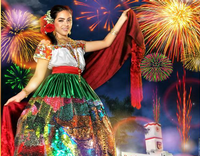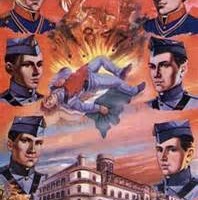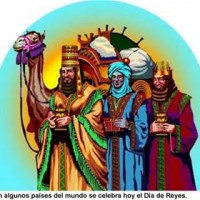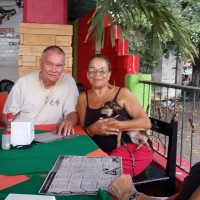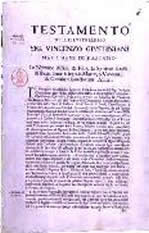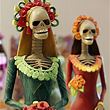
Cozumel News October 29th, 2015: All Saints Day and Day of the Dead in Mexico and Cozumel.The holiday season is upon us in Cozumel and I decided to get The Cozumel Sun back in the groove by explaining the different types of holidays in Mexico. This can be very handy for planning your vacation either to Cozumel or from Cozumel if you already live here. Some of these holiday festivities you must experience! Last but not least in Aurita´s Corner where have I been and what have I been doing? With your support, things can be looking up for my Cozumel charitable projects in the future!
 Dia de Todos Los Santos & Dia de Los Muertos
Dia de Todos Los Santos & Dia de Los Muertos
The history of the Day of the Dead dates back over 3,000 years. Life was seen as a dream and it was believed that only in dying was a human being truly awake and the soul set free. On display in Mexican hotels, restaurants, and other public places are special Day of the Dead altars decorated with candles, food, and sacred orange marigold flowers called cempaxochitl, or Flor de Muerto (“Flower of the Dead”).
 The bakeries on island are filled with sweets shaped in the symbols of skulls, and flowers and memorials fill the cemetery. Every bakery will be selling “Pan de Muerto” (Bread of the Dead) which is semi-sweet sugarcoated bread made from eggs and citrus fruit flavors. Traditionally it is served with hot chocolate that has been mixed with cinnamon.
The bakeries on island are filled with sweets shaped in the symbols of skulls, and flowers and memorials fill the cemetery. Every bakery will be selling “Pan de Muerto” (Bread of the Dead) which is semi-sweet sugarcoated bread made from eggs and citrus fruit flavors. Traditionally it is served with hot chocolate that has been mixed with cinnamon.
November 1, Día de Todos los Santos (All Saints Day) is known as the day when the spirits of children are expected to return and Mexicans pay homage to the souls of the children who have passed on. Tradition states that the departed descend from the heavens on this day, so family members prepare for their arrival by leaving sugar skeletons, skulls and treats on altars specially made for the occasion.
November 2, Día de los Muertos (Day of the Dead), is a celebration for all the adults that have passed away takes place. Families leave the favorite food and drink of the deceased on a special altar constructed in their home or on the tomb of the departed ancestor.
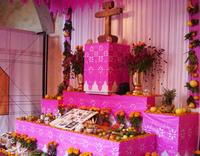 It is traditional for families to visit the cemeteries where their loved ones are buried to clean and to decorate the graves with offerings to their loved ones. Similar offerings are also placed on altars in family homes.
It is traditional for families to visit the cemeteries where their loved ones are buried to clean and to decorate the graves with offerings to their loved ones. Similar offerings are also placed on altars in family homes.
HOLIDAYS IN MEXICO
In Mexico, there are three major kinds of holidays: Statutory, Civic, and Festivities. Here are the descriptions and dates of all the Mexican Holidays:
Statutory holidays (referred as “feriados” or “días de asueto” in Mexico) are legislated through the federal government and ruled by the Federal Labor Law (Ley Federal del Trabajo). Statutory Holidays are observed nationwide. Employees are entitled to a day off with regular pay and schools (public and private) are closed. .Most workers, public and private, are entitled to take the day off with regular pay. However, some employers may require employees to work on such a holiday, but the employee must be paid: His /Her regular salary for the statutory holiday, two times (known as “double time”) the regular pay for their time worked that day
Dia de la Independencia or Aniversario de la Independencia, September 16, commemorates Mexico’s independence from Spain and is the most important patriotic statutory holiday. Parades are held and many schools are closed. When a statutory holiday falls on a Sunday, Monday is considered a statutory holiday; if a statutory holiday falls on Saturday, Friday will be considered a statutory holiday.
January 1 New Year’s Day Año Nuevo First day of the year.
February 5 Constitution Day Día de la Constitución Celebrates the Promulgation of the 1857 and 1917 Constitutions (See also Patriotic holidays in Mexico). Observance: First Monday of February.
March 21 Benito Juárez’s birthday Natalicio de Benito Juárez Commemorates President Benito Juárez’s birthday on March 21, 1806. Observance: Third Monday of March
May 1 Labor Day Día Del Trabajo
Commemorates the Mexican workers’ union movements
September 15 Independence Day Día de la Independencia commemorates the start of the Independence War by Father Miguel Hidalgo y Costilla in 1810
November 20 Revolución Day Día de la Revolución
Commemorates the start of the Mexican Revolution by Francisco I. Madero in 1910. Observance: Third Monday of November.
December 1 Change of Federal Government Transmisión del Poder Ejecutivo Federal Every six years, when a new President is sworn in office. Next observance: December 1, 2018.
December 25 Navidad (Christmas) Christmas celebration; secular and religious holiday.
In addition to these dates, election days designated by federal and local electoral laws are also statutory holidays.
Civic holiday are observed nationwide, but employees are not entitled to a day off with pay:
February 19 Día Del Ejército (Army’s Day) Celebrates the Mexican Army on the Loyalty Day (“Día de la Lealtad”), when President Madero was escorted by the Cadets of the Military College to the National Palace.
February 24 Día de la Bandera (Flag Day) celebrates the current Flag of Mexico and honors the previous ones. Flag Day was implemented by President Lázaro Cárdenas in 1937.
March 18 Aniversario de la Expropiación petrolera (Anniversary of the Oil Expropriation) Celebrates the Oil Expropriation by President Gral. Lázaro Cárdenas in 1938.
April 21 Heroica Defensa de Veracruz (Heroic Defense of Vera Cruz) Commemorates the defense against the United States occupation of Vera Cruz in 1914.
May 5 Cinco de Mayo (Fifth of May) Celebrates the victory of the Mexican Army, led by Gral. Ignacio Zaragoza against French forces in the city of Puebla, on May 5, 1862. Also widely celebrated in the United States. US “celebration” of this Mexican historical event is largely a result of promotions in the US by liquor, beer, and bars/taverns/clubs/restaurants since the 1980s. For many years, Cinco de Mayo celebrations in the US promoted Cinco de Mayo as Mexican Independence Day, which is actually September 16. Although Mexican citizens feel very proud of the meaning of Cinco de Mayo, it is not a national holiday in Mexico, but it is an official holiday in the State of Puebla where the mentioned battle took place.
May 8 Natalicio de Miguel Hidalgo (Miguel Hidalgo’s birthday) commemorates the birth in 1753 of Miguel Hidalgo y Costilla, the initiator of the Mexican Independence War.
June 1 Día de la Marina (Marine’s Day) Celebrates the Mexican Navy.
September 13 Día de los Niños Héroes (“Boy Heroes” or “Heroic Cadets”) Celebrates the Battle of Chapultepec during the Mexican–American War of 1847.
September 15 Grito de Dolores (Cry of Dolores) Celebrates the Grito de Dolores, an event that marked the start of the independence war against Spain on the eve of September 16, 1810. It took place at a church chapel in Dolores Hidalgo, Guanajuato, led by a Creole Catholic priest Miguel Hidalgo y Costilla.
September 27 Consumación de la Independencia (End of Independence War) Celebrates the end of the Mexican Independence War on 1821; 11 years after Father Hidalgo started it.
September 30 Natalicio de José Ma. Morelos y Pavón (Morelos’ birthday) Commemorates the birth in 1765 of Father José María Morelos y Pavón, one of the founding fathers of the Mexican nation.
October 12 Descubrimiento de América (Columbus Day) Commemorates the Discovery of the Americas in 1492 by the Italian navigator Christopher Columbus.
Festivities are traditional holidays to honor religious events, such as Carnival, Holy Week, Easter, etc. or public celebrations, such as Mother’s day, Father’s day, Valentine’s Day, etc.
January 6 Día de los Reyes Magos (Epiphany) Celebrates the Biblical New Testament story of the arrival of the three wise men who each brought a gift to the Christ child. Traditionally, children receive toys, and people buy a pastry called Rosca de Reyes. Anyone who bites into the bread and finds a figurine of the Christ child must host a party for the Day of Candlemas (February 2). It is not a state holiday.
February 14 Día de San Valentín (Valentine’s Day) Celebrates amorous unions. On this day, traditionally, men give chocolates, flowers, jewelry, dinner and serenade to their special women, as well as to their female friends. It is not a state holiday.
April 30 Día Del Niño(Children’s Day) Honors all the children. It is not a state holiday.
May 10 Día de las Madres (Mother’s Day) Honors all the mothers throughout the country. It is not a state holiday.
May 15 Día Del Maestro (Teacher’s Day) Honors all the teachers throughout the country. It is not a state holiday.
May 23 Día del estudiante (Students’ Day) Honors all the students throughout the country. It is not a state holiday.
Third Sunday of June Día del Padre (Father’s Day) Honors all the fathers throughout the country. It is not a state holiday.
November 1 Día de Todos los Santos(All Saints’ Day /Day of the Dead) Honors dead relatives and/or friends (who were less than 18 years of age and unmarried) with candles, food and flower offerings, altars, and pre-Columbian and Christian rituals. It is not a state holiday.
November 2 Día de los Fieles Difuntos (All Souls’ Day / Day of the Dead) Honors dead relatives and/or friends (who were more than 18 years of age or married) with candles, food and flower offerings, altars, and pre-Columbian and Christian rituals. It is not a state holiday.
December 12 Día de la Virgen de Guadalupe (Day of the Virgin of Guadalupe) Celebrates the day that Our Lady of Guadalupe appeared on Tepeyac hill to the native Juan Diego Cuauhtlatoatzin. It is not a state holiday.
December 16–24 Las Posadas (Las Posadas) Commemorates the Biblical New Testament story of Joseph and Mary’s search for shelter in Bethlehem. Consists of candlelight processions as well as stops at various nativity scenes.
December 24 Nochebuena (Christmas Eve) Celebrates the eve of the nativity of Jesus, as both a secular and religious winter holiday. The traditional treats for this holiday are buñuelos, tamales and atole or champurrado. Sometimes they eat gelatina de colores (different flavors of Jell-O and a milk-based Jell-O mixed together to make a colorful treat) Las Posadas are celebrated nine days before Nochebuena, usually accompanied by a piñata party for children and dance music for adults.
December 25 Navidad (Christmas) Christmas celebration; secular and religious holiday.
December 28 Dia de los Santos Innocentes (Day of the Innocents) On this day, people pull practical jokes on each other. It is equivalent to the U.S. version of April Fools’ Day (April 1). People must not believe anything that other people say nor let them borrow any amount of money. If any person has fallen victim of the joke, the person pulling the joke will say ¡Inocente palomita…! literally meaning ‘Innocent little dove’ (equivalent to saying April Fools!).
December 31 Año Nuevo Vìspera (New Year’s Eve) Mexicans celebrate New Year’s Eve or locally known as Año Nuevo, by downing a grape with each of the twelve chimes of the bell during the midnight countdown, while making a wish with each one.
Mexican families decorate homes and parties, during New Year’s, with colors such as red, to encourage an overall improvement of lifestyle and love, yellow to encourage blessings of improved employment conditions, green to improve financial circumstances and white to improved health.
Mexican sweet bread is baked with a coin or charm hidden in the dough. When the bread is served, the recipient whose slice contains the coin or charm is believed to be blessed with good luck in the new year.
Another tradition is making a list of all the bad or unhappy events from the current year; before midnight, this list is thrown into a fire, symbolizing the removal of negative energy from the new year. At the same time, thanks is expressed for all the good things one has had during the year that is coming to its end so that they will continue to be come in the new year.[
Mexicans celebrate by having a dinner at 1:00 a.m. with their families. The traditional meal being turkey and mole, a tradition that has now spanned worldwide.
Those who want to party generally go out afterwards, to local parties or nightclubs. If you are in Mexico, you can still enjoy festivities in the street. In Mexico City, there is a huge street festival on New Year’s Eve; celebrations center on the Zocalo, the city’s main square. You can expect a lot of firecrackers, fireworks and sparklers. At midnight, there is a lot of noise and everyone shouts: “Feliz año nuevo!” People embrace, make noise, set off firecrackers, and sing Auld Lang Syne.
This information originally came from Wikipedia Encyclopedia on the internet. Help me keep it updated by reporting any changes please.
The inability to keep up funding for my year around support of the poor families in Cozumel has been nerve wracking and I have been trying to think of what I can do to help others help themselves. (Like that saying, teach them how to fish, etc.) I am far from rich, but blessed in so many ways. Somehow, the good Lord keeps looking after us, providing mysteriously each time we manage to give away our necessities to help someone else.
As you know, I have one family that I adopted and lives with us. My adopted family is well known on the island and our home is the place to come to for all local emergencies. Many a late night there has been someone at our door in need of a plate of food. WE NEVER REFUSE FOOD to anyone. We have paid school fees, purchased school uniforms, and school supplies. WE HAVE NEVER TURNED DOWN THE NEEDS OF A CHILD. I guess the strangest request we granted was to bury a local senior in our family Mausoleum. The surviving family members did not have the funds to purchase a plot, so my Mother now has company at Gardin de Paz Cemetery.
As you may recall, last year I adopted a second family that I featured in The Cozumel Sun. A fire had left them in a small-unfinished cement shell of a room without anything. Thanks to efforts with the support of my readers, one year later, their one room is finished and furnished, they have an indoor bathroom with plumbing and fixtures and are currently working on a second room for their family of four. During this past year, whether they had food or not depended on the Father having work. Many times in an effort to feed them, my own family had to make sacrifices. I have hired the Mother as of the start of school to work mornings in our home. As a result, I no longer have to worry about them having food.
 My ON-GOING GARAGE SALE was a huge success. I have distributed clothing and other necessities to the poor and the funds I raised from cleaning out my closets, selling unused electronics, old movies, tables, chairs, kitchen utensils, surplus dishes, pots, pans, etc. have been used for contributions or to purchase more items to sell. I found myself running out of things to sell, most of my friends have already cleaned out their closets, so I started adding new items to sell at a low price. I have a collection of toys and other items ready for distribution at Christmas.
My ON-GOING GARAGE SALE was a huge success. I have distributed clothing and other necessities to the poor and the funds I raised from cleaning out my closets, selling unused electronics, old movies, tables, chairs, kitchen utensils, surplus dishes, pots, pans, etc. have been used for contributions or to purchase more items to sell. I found myself running out of things to sell, most of my friends have already cleaned out their closets, so I started adding new items to sell at a low price. I have a collection of toys and other items ready for distribution at Christmas.
I found that I enjoyed selling my goods. It allowed me to meet all sorts of people, whom I never would have otherwise met. I loved it so much, I decided to make it a legitimate business to help fund my charitable projects and enable my adopted family to be self-sufficient once I am gone.
I am so very proud to announce that we now have a licensed and fully stocked “Novedades and Papeleria Mama Lilly.” We will have the grand opening this weekend, please come and support us. We will have all your office, business, and school supplies, arts and crafts supplies, copies, lamination, clothing, novelties and gifts of all kinds.
 Mama Lilly’s is located next to our home #1081 35 Avenida Entre Calles 17 y 15 Bis,
Mama Lilly’s is located next to our home #1081 35 Avenida Entre Calles 17 y 15 Bis,  Colonia Independencia, just one block over from Cha Chas Kitchen!
Colonia Independencia, just one block over from Cha Chas Kitchen!
HALLOWEEN / DAY OF THE DEAD DECORATION SALE
EVERYTHING FROM $ 4 PESOS -$45 PESOS
EVERYTHING MUST GO!
AURA CASA 987-120-5903
CELL 987-118-4453


